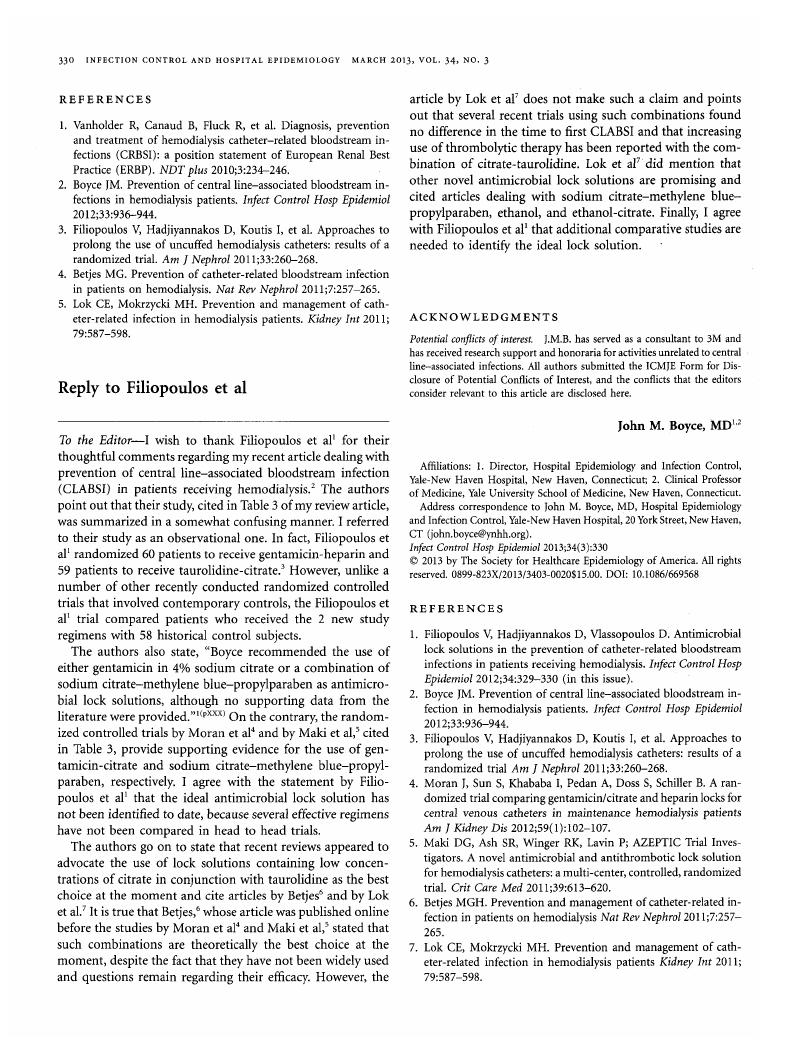No CrossRef data available.
Article contents
Reply to Filiopoulos et al
Published online by Cambridge University Press: 02 January 2015
Abstract
An abstract is not available for this content so a preview has been provided. As you have access to this content, a full PDF is available via the ‘Save PDF’ action button.

- Type
- Letters to the Editor
- Information
- Copyright
- Copyright © The Society for Healthcare Epidemiology of America 2013
References
1.
Filiopoulos, V, Hadjiyannakos, D, Vlassopoulos, D. Antimicrobial lock solutions in the prevention of catheter-related bloodstream infections in patients receiving hemodialysis. Infect Control Hosp Epidemiol
2012;34:329–330 (in this issue).Google Scholar
2.
Boyce, JM. Prevention of central line-associated bloodstream infection in hemodialysis patients. Infect Control Hosp Epidemiol
2012;33:936–944.Google Scholar
3.
Filiopoulos, V, Hadjiyannakos, D, Koutis, I, et, al. Approaches to prolong the use of uncuffed hemodialysis catheters: results of a randomized trial
Am J Nephrol
2011;33:260–268.Google Scholar
4.
Moran, J, Sun, S, Khababa, I, Pedan, A, Doss, S, Schiller, B. A randomized trial comparing gentamicin/citrate and heparin locks for central venous catheters in maintenance hemodialysis patients
Am J Kidney Dis
2012;59(1):102–107.Google Scholar
5.
Maki, DG, Ash, SR, Winger, RK, Lavin, P; AZEPTIC Trial Investigators. A novel antimicrobial and antithrombotic lock solution for hemodialysis catheters: a multi-center, controlled, randomized trial. Crit Care Med
2011;39:613–620.Google Scholar
6.
Betjes, MGH. Prevention and management of catheter-related infection in patients on hemodialysis
Nat Rev Nephrol
2011;7:257–265.Google Scholar
7.
Lok, CE, Mokrzycki, MH. Prevention and management of catheter-related infection in hemodialysis patients
Kidney Int
2011; 79:587–598.Google Scholar


